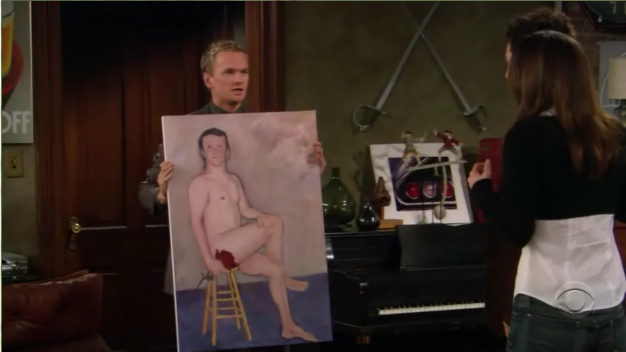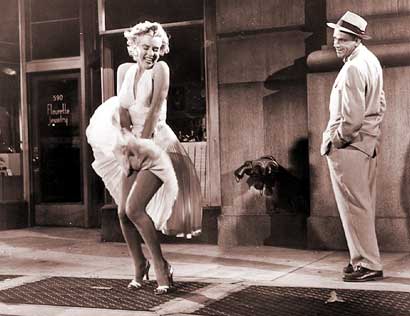M: I am happy to tell everyone that our firm has made a few million dollars this year based on the clever types of advertisements we create. I am grateful to my advertising executives for the creativity and cleverness by which you influence women to continue to purchase our clothing line. For your hard work, you will find a sizable bonus at the end of the year in your paychecks. I would like to introduce a new comer to our firm. Her name is Ashley Roth.
M: Does anyone have any new ideas to create more advertisements that will encourage women to buy our product so they can be more appealing to their man or men in general? Remember, many American men are attracted to young, blonde, blue eyed models who are beautiful, seductive, slim and tall. You know that women are suckers. “Women have been duped in learning about stereotypes.” Our advertisements must continue to “create a mythical wasp-oriented world where women are perfect and are flawless to men.” (Kilbourne, Beauty Beast pg. ) Even our models are airbrushed so they look absolutely gorgeous to men and women can’t wait to buy our clothing line.
A: I think we should create advertisements that portray the average woman. Our ads should show women as independent, intelligent beings and enhance their self- esteem. I do not believe that every woman is blonde, blue eyed, tall, slim, and beautiful. “(Kilbourne, Beauty Beast pg. ) (quote modified) Why should models arouse men sexually and make themselves feel insecure?
M. Are you kidding? Every firm hires models and for a good reason. They are there so women can look up to them as the sexual ‘object’ they want to become, beautiful and perfect. Men love to gaze at these sexual objects with their young skin, tall legs and beautiful face with luxurious hair. Which man wants to look at the everyday woman? The big draw is that women are duped into wanting to look like these sexualized objects.
A: First of all, no one is perfect. The models are photo shopped and many of them suffer from anorexia or bulimia because they feel they must portray an image that will be accepted by the Authority Figures, who are men like you. The type of ads that you display objectify women and this image makes them feel bad about themselves and women believe that everyone must possess this type of true beauty by purchasing your clothes. Do you see how these women are sexualized? These models are showing the American Apparel jean and the other model is showing off hair scrunchies in a sexualized provocative manner. Why do they need to be in provocative poses and clothing to promote a product that has nothing to do with breasts and nudity?
M: Stop progress? “There have been some changes in the images of women. Indeed, a ‘new woman’ has emerged in commercials in recent years. She is generally presented as superwomen, who manages to do all the work at home and on the job (with the help of a produce of course, not of her husband or children or friends}” (Kilbourne, Beauty Beast pg. 125) (Cutting the quote off there as to butcher the original meaning).
A: This is propaganda for women to think that they intelligent and are as powerful as men. American Apparel executives continue to exploit women in the fashion industry. My friend said, “Conventional beauty is her only attribute. She has no lines or wrinkles, no scars or blemishes. Indeed, she has no pores’ (Kilbourne, Beauty Beast pg. 122) This is an unrealistic example of beauty. Everyone has imperfections and that is part of being human. The media portrays women in a sexualized and fake way.
M: Reality is boring and it doesn’t sell anything. We are a business and we require bankable ideas. If we put the ugliest women we found off the streets onto our postures, our stocks would fall through the floor. The models aren’t just for the pleasure of men. These advertisements cater to women as well. There are young guys with a six pack, square jaws, lean bodies and they sell clothes, too.
A: I will not lower myself by justifying that it is ok for women to be viewed as ‘object’ must because there are male models sell clothing. I will tell you that no one is flawless or perfect. Women models in the advertising industry that are selling your ‘sexualized’ clothes are being encouraged to be passive, dependent female parts to men. It debases women because we are not your ‘sexualized objects’ to gawk at. We are sending the wrong message that women are supposed to be sexy and virginal, experienced and naïve at the same time. My last comment to you is that the advertising approach for your clothes line reduces people to de-emphasize human contact and individuality.
M: Aren’t you forgetting that we are the media you’re talking about? It’s our job to make our clothing products look as purchasable as possible. If we don’t keep up with all the other fashion companies how could we possibly stay in business?
A: Products do not need to sexualize women’s bodies in order to sell. Our models should not be on display as a sexual object. We are selling this clothing line not women’s body parts.
M: “Sighs” Clearly we are not getting anywhere with this. Let’s take a break and get some more opinions on this. (Move into discussion and pretend everyone is part of the meeting)
Questions:
1. Why would any woman pose in provocative poses for male pleasure?
2. How can we change the way the advertising industry portrays women?
3. Why should the modern man need to see women objectified as objects?
4. How can women make their voices heard in the decisions of advertising?
5. How can the patriarchy definition of beauty coexist with the feminist form of beauty?
5. How can the patriarchy definition of beauty coexist with the feminist form of beauty?























